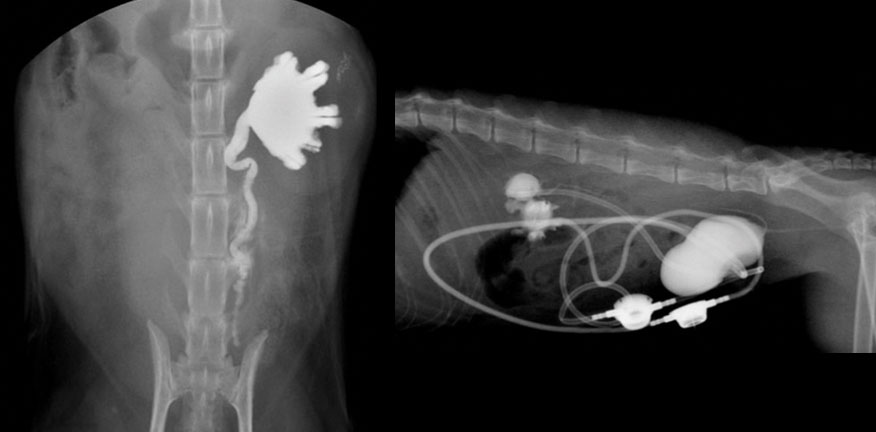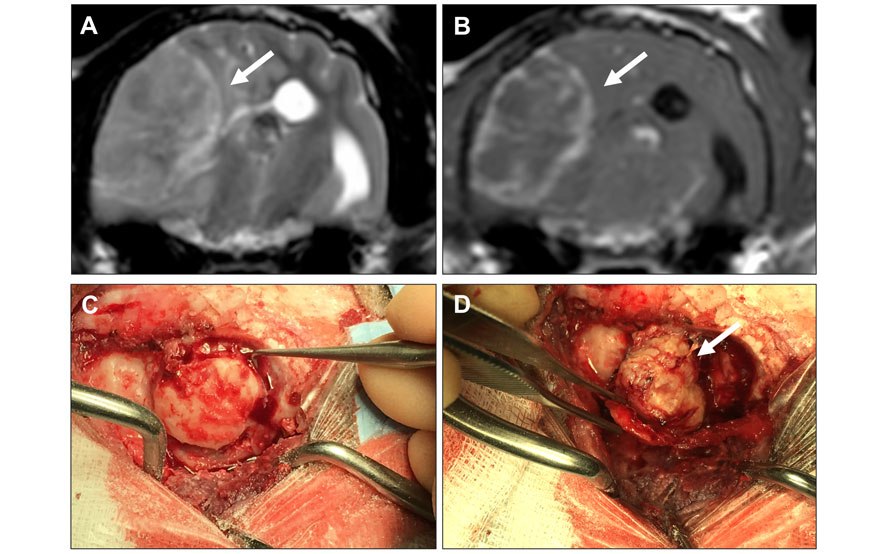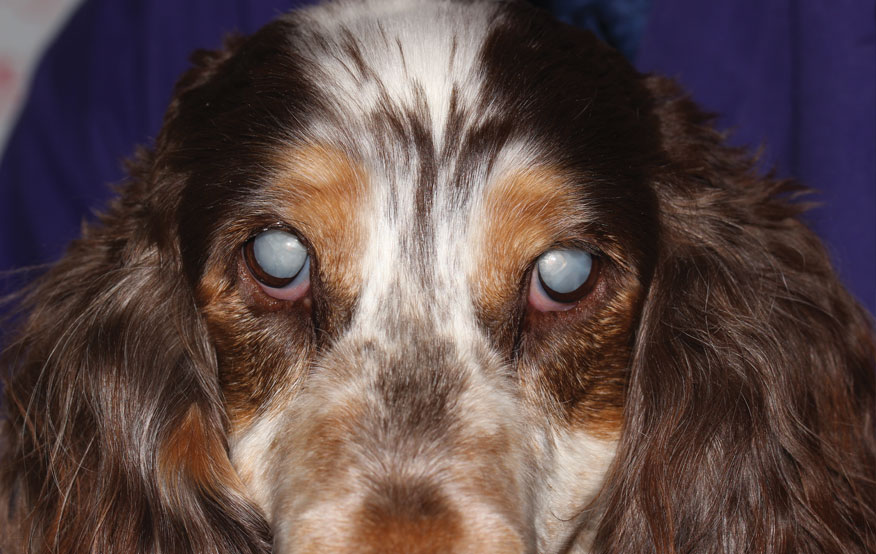Most Common Cases – Soft Tissue, Orthopaedics, Ophthalmology and Neurosurgery
Clinical Connections – Summer 2017
We focus on some of the most common surgical cases treated by the Orthopaedics, Soft Tissue Surgery, Neurology and Neurosurgery, and Ophthalmology teams at RVC Small Animal Referrals.
RVC Team Collaboration
There is considerable collaboration between the various clinical teams at RVC Small Animal Referrals, with many patients being seen and treated by clinicians in more than one team. For example, the Neurology and Neurosurgery Service works closely with the Internal Medicine team, Emergency Referrals, the Oncology Service and Orthopaedics. Animals with gait abnormalities are often seen and assessed by both the Orthopaedics and Neurology & Neurosurgery services. The expertise of the Diagnostic Imaging and Anaesthesia and Analgesia teams is critical to surgical cases referred to all the other teams.
Orthopaedics
Commenting on cranial cruciate ligament rupture cases, Ignacio Calvo, head of the Veterinary Orthopaedics Service, said: “Multiple surgical techniques are available to treat this condition. More often than not the decision behind the surgical technique seems to be heavily influenced by surgeon preference. Here at the RVC we recognise that the morphology of the proximal tibia and the outcome of different techniques among different dog breeds varies significantly, and therefore we base the decision on the individual needs of each of our patients.
“Tibial plateau levelling osteotomy (TPLO), tibial tuberosity advancement (TTA), tibial closing wedge osteotomy (TCWO) or extracapsular stabilisation are all available in our centre. From this summer, we are hoping to be able to offer total knee replacement for severe cases of stifle pathology.
He added: “Elbow dysplasia and medial coronoid disease are certainly a close second in term of cases visiting our orthopaedics department. Medial coronoid disease can be a frustrating condition. Here at the RVC, we are lucky to have a top of the range CT scannner available to help us with the diagnosis of this condition. It is not unusual for arthroscopy to be required, and in the majority of the cases, this is probably what it is required to resolve the problem.
“However in some instances the disease is more severe, causing eburnation of the elbow medial compartment (medial portion of the humeral condyle and ulna articular surface). In these cases, we have the possibility of performing a proximal ulnar abducting osteotomy (PAUL) to shift the loading towards the unaffected lateral compartment. In some unfortunate cases the whole elbow joint is eburnated, necessitating a total elbow replacement.”
The orthopaedic team works closely with the Veterinary Physiotherapy and Rehabilitation Service, which plays a key role in patient recovery and evaluation.
Orthopaedics Service Common Cases
Canine
- Cruciate ligament rupture
- Forelimb lameness investigation
- Patella luxation
Feline
- Pelvic fractures
- Supracondylar fractures
Soft Tissue Surgery
Discussing congenital portosystemic shunt cases, Vicky Lipscomb, head of Veterinary Soft Tissue Surgery, said: “These often present in young puppies and is a particular area of interest and expertise for our team. Pre-operative CT planning and intra-operative fluoroscopy is particularly helpful for the more complicated intrahepatic shunt cases.”
In relation to septic peritonitis, the second most commonly referred soft tissue case for dogs, she commented: “This is often due to perforated or dehisced small intestine, which requires abdominal exploration, resection of bowel and an abdominal drain to be placed. We work closely with our specialist critical care team in the postoperative period as these are critically ill patients that have a 50% survival even with the best treatment available.”

For brachycephalic obstructive airway syndrome, the team has a dedicated brachycephalic clinic and a strong clinical research interest and publication output. RVC has developed a ‘six-minute walk test’ to assess these types of dogs before and after airway surgery. We also work closely with Ophthalmology, Orthopaedic and Neurology teams to assess all their Brachycephalic issues which are not just confined to the airways.
Alluding to subcutaneous ureteral bypass system for upper urinary tract calculi placement, the most common soft tissue referral for cats, Professor Lipscomb said: “We have placed over 75 of these devices since their introduction in 2012 and have been following up our results long-term so that we can evolve our protocols and optimise the outcome for these challenging cases”.
Soft Tissue Surgery Service Common Cases
Canine
- Congenital portosystemic shunts
- Septic peritonitis
- Brachycephalic obstructive airway syndrome
Feline
- Subcutaneous ureteral bypass system for management upper urinary tract calculi.
Neurology & Neurosurgery Service
Steven De Decker, head of the Neurology and Neurosurgery Service commented: “The neurology team sees a large variation of cases, such as animals with disorders affecting the spinal cord, brain or neuromuscular system. Although this can appear similar, there is a wide variety in diagnostic modalities and treatment options required to achieve a good outcome in these cases.”
He also said: “Some patients require the most advanced diagnostic modalities, such as magnetic resonance imaging, while others only need a detailed neurological examination. Similarly, while some of our patients need advanced neurosurgery, others can start intense physiotherapy and hydrotherapy immediately after a diagnosis is reached. The most important task of our team is therefore to assess which combination of diagnostic and treatment options will result in the best possible outcome for each individual patient.”

Neurology and Neurosurgery Service Common Cases
Canine
- Intervertebral disc disease
- Epilepsy
- Vestibular syndrome
Feline
- Epilepsy
- Infectious peritonitis virus
- Vestibular syndrome
Both Species
- Brain tumours
Ophthalmology Service
Màrian Matas Riera, head of the Ophthalmology Service, said: “The Ophthalmology Service sees a number of routine and emergency referrals. The most common emergencies are deep corneal ulcers; these tend to occur in brachycephalic breeds and we recommend seeing them sooner rather than later. Ulcers can be managed in a few different ways and some require surgical intervention to reconstruct the cornea. At RVC we have a corneal donor bank available 24/7, which makes a big difference on treatment options in our patients.
“Another common referral is patients with cataracts. When they come for an appointment we discuss if the patient would benefit from surgery and the implications for owners and pets to undergo this procedure. Our aim is to help restore and improve our patients’ vision wherever possible.”

Ophthalmology Service Common Cases
- Corneal ulcers
- Entropion/eyelid disorders
- Canine cataracts
To make a referral, call RVC Small Animals Hospital on 01707 666 365 or email qmhreception@rvc.ac.uk
